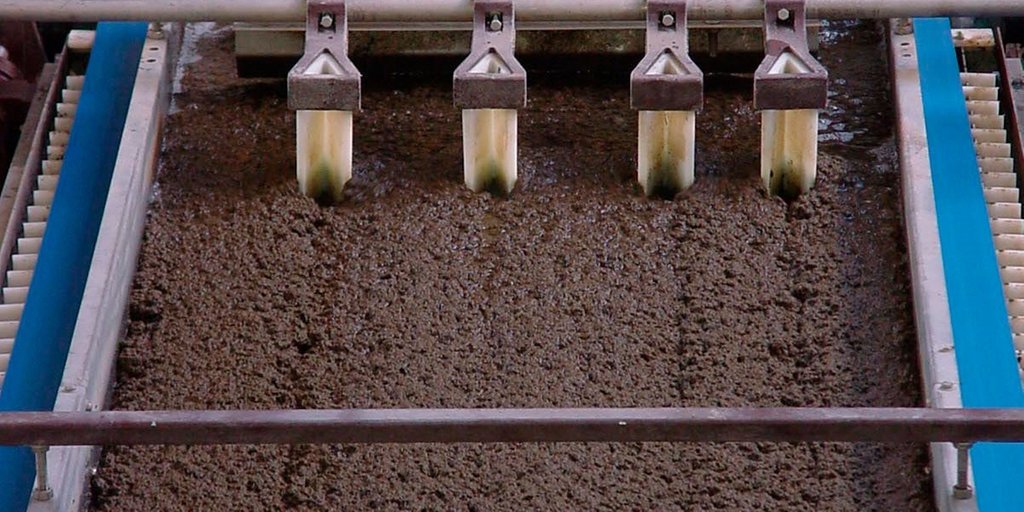Centrifugal FAQs: Essential Answers to Common Questions
Centrifugal pumps are key components in many industrial applications. They are known for their ability to move large volumes of liquid efficiently. A centrifugal pump works by converting rotational energy from a motor to energy in a moving fluid. This action uses the force of inertia to transfer the liquid from the pump inlet to the outlet.
Choosing the right centrifugal pump depends on a number of factors, such as flow rate and the viscosity of the liquid being pumped. It is also important to consider the installation and startup procedures to ensure optimal performance. When selected and used correctly, centrifugal pumps can significantly increase efficiency and save on energy costs.
For those facing questions about centrifugal pumps, understanding their workings and careful selection can lead to more efficient operations. This article addresses the most common inquiries and offers insight into centrifugal pump usage and maintenance recommendations.
Key Takeaways
- Centrifugal pumps convert motor energy to fluid movement.
- Proper selection and installation are crucial for efficiency.
- Understanding pump operations can optimize performance.
Understanding Centrifugal Pumps
Centrifugal pumps are essential devices used to move fluids through a system, utilizing rotational energy imparted through an impeller. These pumps excel in applications requiring high flow rates and low viscosity liquids. The design and operation of centrifugal pumps involve several critical components and principles.
Basic Principles of Centrifugal Pumps
A centrifugal pump uses a rotating impeller to create flow by converting mechanical energy into hydraulic energy. The process begins as the fluid enters the pump through the suction inlet. The impeller’s rotation increases the fluid velocity, propelling it outward into a diffuser or volute.
The fluid’s velocity is converted into pressure energy, allowing it to flow through the system. The pump’s efficiency depends on factors like impeller size and speed, as well as the liquid’s properties. Understanding the pump curves, including static head, suction head, and total head, is crucial for choosing the right pump for specific needs.
Key Components and Their Functions
The main components of a centrifugal pump include the impeller, volute, shaft, wear ring, and lantern ring. The impeller is the heart of the pump, driving fluid movement.
The volute is a spiral casing that helps in converting velocity to pressure energy. Wear rings minimize leakage and maintain efficiency by reducing the gap between the impeller and casing. The lantern ring, located in the stuffing box, ensures lubrication and prevents air entering the system. These components work together to optimize pump performance and longevity.
Centrifugal Pump Definitions and Concepts
A centrifugal pump is defined as a mechanical device designed to move fluid by harnessing rotational energy from an impeller. Its purpose is to efficiently transport liquid from one point to another.
Key concepts include suction lift, which is the vertical distance between the pump and fluid source, and static head, which measures the potential energy needed to move fluid to a certain height. Understanding these definitions and how they relate to pump performance helps in selecting the right pump for various applications.
Installation and Startup Procedures
Proper installation and startup of a centrifugal pump are crucial to ensure efficient and long-lasting operation. This includes setting up the pump correctly, starting it safely, and dealing with potential airlocks.
Installing a Centrifugal Pump
Correct installation begins with selecting a suitable location. The area should be stable and level to support the pump and allow easy access for maintenance. A firm foundation will prevent vibrations that might cause damage. Anchor bolts should be used to secure the pump. Align the pump and its driver properly to prevent excessive wear and vibration.
Check the piping for any potential stress or misalignment, as this can lead to leaks or mechanical failures. Always ensure all connections are tight and sealed to prevent later issues.
Initiating Pump Operations
Before starting the pump, ensure that all lubrication systems are functioning properly. Verify that the pump casing and impeller are completely filled with liquid to prevent damage during operation. Open any necessary valves to allow a continuous flow of liquid.
Start the pump slowly to monitor its performance and ensure that it operates at the correct speed. Watch for any unusual noise or vibration, as these could indicate an alignment or mechanical problem that needs immediate attention.
Dealing With Airlocks and Air Removal
Airlocks can significantly disrupt the pumping process, causing loss of prime and efficiency. Priming is crucial to eliminate air and fill the pump with liquid. Priming methods vary but may include installing a foot valve at the suction pipe or using a vacuum pump to remove air.
To further prevent airlocks, ensure all valves are properly configured to prevent air from entering the system. Regularly check and bleed any air from the pump and piping to maintain optimal pump function. Techniques like venting and using air release valves can help manage airlock issues effectively.
Operational Insights
Understanding how centrifugal pumps operate is crucial for their effective use. Key insights include how to increase pump efficiency and handle common problems. These insights help in keeping the pump running smoothly and preventing downtime.
Increasing Pump Efficiency
Enhancing efficiency is critical for maximizing the performance of a centrifugal pump. One way to achieve this is by increasing the discharge pressure. Adjusting the impeller diameter or changing the speed can help achieve desired pressure levels. Fine-tuning the flow rate can also improve efficiency. It’s important to regularly check the wear ring clearance. Keeping this clearance within recommended limits ensures better operation and less energy waste.
Regular maintenance is another key factor. For instance, replacing bearings as needed prevents friction losses. Using high-quality lubricants reduces wear and tear. Implementing these strategies can greatly improve the pump’s overall efficiency.
Troubleshooting Common Issues
When issues arise, identifying the root cause is essential. Low flow rates can often be traced to blockages or wear rings needing replacement. For wear ring removal, careful dismantling of the pump is required. Ensuring the clearance is correct prevents cavitation and noise.
Another problem could be in the bearings. If noises or vibrations are detected, bearing replacement might be necessary. The process involves disassembly and then reassembly of the pump components. This helps ensure smooth operation and avoids potential failures. Regular inspections help catch these issues early, saving time and resources in the long run.
Centrifugal pumps are widely used for their reliability and efficiency in various industrial applications. Proper operation and timely troubleshooting are key to optimizing their performance.
Pump Selection and Usage
Selecting the right centrifugal pump is crucial for optimal performance and efficiency. This part covers key considerations in choosing a pump and understanding its suction and discharge requirements.
Choosing the Right Centrifugal Pump
When selecting a centrifugal pump, users must consider flow rate and head requirements. Determine the desired flow rate by assessing the volume of liquid to move over a specific time. Accurate calculations ensure the pump meets the system’s needs.
Pump curves are vital tools in this process. They provide data on the pump’s ability to produce flow against a certain head. By examining these curves, one can identify a pump that operates efficiently and matches operational demands. More information on understanding centrifugal pump curves can be found here.
Additionally, consider pump size, materials, and overall build. Usage environments, like construction sites or aquaculture, require specific features for durability. For instance, centrifugal pumps are used in construction to remove water from sites, so they must handle debris.
Calculating Suction and Discharge Requirements
The suction and discharge sides of a pump system are crucial for its functionality. Calculate suction lift by measuring the vertical distance between the pump’s position and the liquid surface. This determines how far and high a centrifugal pump can lift water, ensuring the system handles the required tasks effectively.
On the discharge side, consider the total head, which includes static head and any losses in the system, like friction. Proper sizing of pipes and fittings minimizes losses and maintains the desired flow and pressure.
Pump performance diagrams are essential tools. These diagrams help in selecting a pump that meets specific suction and discharge needs efficiently. More insights can be gained from guidelines on centrifugal pump sizing in various applications.
Historical and Economic Context
Centrifugal pumps play a crucial role in various industries by efficiently moving fluids. This section explores their historical origins and examines their advantages and disadvantages in industrial applications.
Inventor and Evolution of Centrifugal Pumps
The centrifugal pump was first conceptualized by a scientist in the 17th century. Denis Papin, a notable French inventor, is often credited with its development. His early designs laid the groundwork for modern variations. As technology progressed, these pumps became more sophisticated, with improvements in efficiency and capacity.
Throughout the 19th and 20th centuries, advancements in materials and engineering further refined these pumps. They evolved into versatile tools used in fields like water treatment, oil refining, and chemical processes. The focus has always been on maximizing output while reducing energy consumption and maintenance costs.
Advantages and Disadvantages in Industry
Centrifugal pumps are favored for several reasons. Advantages include their ability to handle large volumes of liquid with ease and efficiency. They are simple in design, leading to lower costs in production and maintenance. Moreover, their capacity to operate at high speeds allows for diverse applications.
However, there are disadvantages. They can lose efficiency when handling highly viscous or solid-laden liquids, which can lead to increased wear and tear. Additionally, centrifugal pumps may encounter issues with cavitation, which occurs when vapor bubbles form in the fluid, potentially causing damage. Despite these challenges, their benefits make them indispensable in many industries.
Frequently Asked Questions
Centrifugal devices are widely used in numerous applications, from pumping liquids to separating substances. Troubleshooting issues, understanding limitations, and optimizing performance are key aspects for efficient operation.
What are the common issues encountered with centrifugal pumps?
Centrifugal pumps often face issues like cavitation, overheating, and leaks. Cavitation occurs when vapor bubbles form in the liquid being moved, leading to damage. Regular maintenance and monitoring can help in identifying and preventing these problems. Overheating may result from mechanical faults or inadequate flow, and leaks often stem from worn seals or gaskets.
How do centrifugal separators work and what are their limitations?
Centrifugal separators use centrifugal force to separate particles based on density differences. Denser materials move outward while lighter substances stay closer to the center. They are effective for separating emulsions and slurries but can be limited by the size of particles and the viscosity of the fluid. Performance may decrease with particularly fine particles or very thick mixtures.
Can centrifugal pumps be used for varying the flow rate?
Yes, centrifugal pumps can handle varying flow rates by adjusting the pump’s speed or the system’s valves. However, efficiency is optimal at a specific design point, and deviations can impact performance and cause mechanical strain. It’s important to ensure that variations do not lead to conditions like cavitation, which can damage the equipment.
What factors affect the efficiency of centrifugal pumps?
Several factors influence the efficiency of centrifugal pumps, including impeller design, fluid viscosity, and pump size. Proper selection and installation are crucial, as mismatched components can lead to energy losses. Regular maintenance like cleaning and checking alignment can also help maintain efficiency.
How does a centrifugal pump’s performance degrade over time?
Performance degradation in centrifugal pumps often results from wear and tear, clogging, and component fatigue. The impeller may become eroded by abrasive particles, and seals may wear down, leading to leaks. Routine inspections and timely replacements of worn parts are essential for sustaining performance.
In what applications are centrifugal separators typically used?
Centrifugal separators are commonly used in industries requiring the separation of solids and liquids. Applications include the dairy industry for cream separation, wastewater treatment, and chemical processing. Their ability to efficiently separate substances based on density makes them vital in these processes, although they may struggle with very fine or sticky particles.



